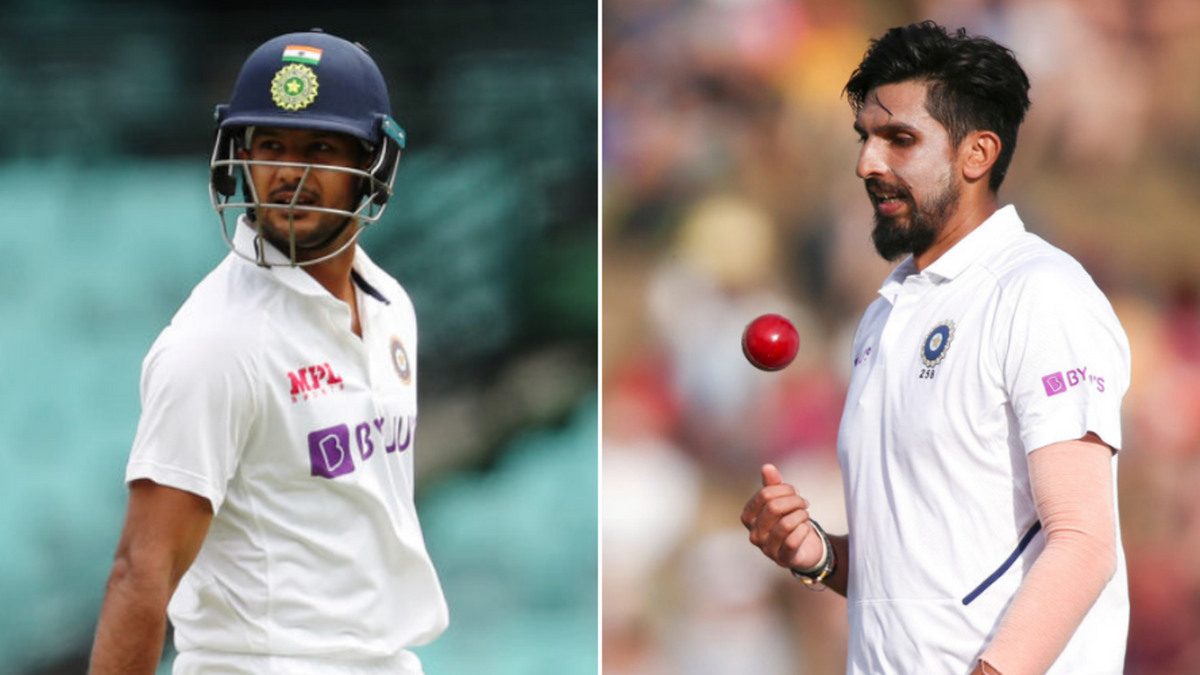
India’s home season begins with the much-anticipated four-match Test series against England. Aadya Sharma takes a look at some of the selection dilemmas that Virat Kohli’s team will have to deliberate over.
India will feature in a Test series at home after a gap of nearly 15 months, a considerable chunk of which was forced by the suspension of international cricket. The team carried a significantly different look in their last home series, with a full-strength squad at their disposal against Bangladesh, but a spate of injuries in recent months has resulted in a changed setup.
Having managed a series win in Australia for the second time on two tours, a buoyant Indian side will take on England, who are currently fourth in the ICC World Test Championship table and are coming off a 2-0 whitewash of Sri Lanka. As expected, the Indian team has plenty to decide in terms of selection matters for the four-Test series, which will play a crucial part in their bid for a spot in the Test Championship final.
Mayank/Gill/Rohit – the opening puzzle continues
Prithvi Shaw’s omission suggests that an in-form Shubman Gill has made himself a frontrunner for the opening spot in Tests, especially on the back of an impressive debut in Australia (259 runs @ 51.80 in three Tests). While the three Tests gave ample evidence of his maturity and readiness for Test cricket, it reignites the debate over India’s opening combination at home. Rohit Sharma was in raging form in home Tests in 2019, averaging 92.66 with three centuries in six innings. Mayank Agarwal’s Test career had been on a steep upward climb before he hit a sudden rough patch at the start of 2020, and he has now gone nine innings without a Test fifty, even though his home average still reads a Bradmanesque 99.50. In such a scenario, it would be a tough call to derive one pair and stick with it, although the Rohit-Gill combination seems to be a favourite to continue from where they left off in Australia.
Can Pant and Saha coexist in the XI?
A good part of the lead-up to the Australia Test series involved a vital discussion for Indian fans – who should keep wicket, Wriddhiman Saha or Rishabh Pant? The two wicketkeepers, separated by 13 years, are as different as chalk and cheese; while Saha’s adroitness behind the stumps is unmissable, Pant has made himself virtually undroppable after two stellar knocks of 97 and 89* in Australia. So far, India have kept a raw formula for home and away Tests, preferring Saha for home games due to his proficiency keeping up to spinners on turning tracks. It remains to be seen if Pant has done enough to displace Saha as the wicketkeeper in the side, or there’s a provision to include both in the XI, with Pant possibly acting as a specialist batsman at No.6.
Who bats at No.6?
Hanuma Vihari’s career-defining Sydney masterclass was worth just 23 unbeaten runs, but it highlighted just how crucial a role the team’s No.6 has to play. His lingering hamstring injury has ruled him out of at least the first two Tests, compounding the problems of a middle order that’s already reeling with the absence of Ravindra Jadeja. Mayank batted at five and six in Brisbane, and while it did seem like a stop-gap arrangement, keeping him down the order could also solve the opening conundrum. Similar stability at No.6 could also be provided by KL Rahul, with one of Wriddhiman Saha or Rishabh Pant occupying the No.7 spot.
Another option for the position would be Hardik Pandya, who hasn’t played a Test since 2018. According to reports, Pandya may be in the squad purely in the role of a batsman (with injury restricting his ability to bowl), and could fit into the position if India field four bowlers excluding him. Alternatively, if both Saha and Pant play, an additional batsman may not find space anyway.
If all of their players were fit and available, what would India's selectors think their best XI for home Test matches looked like?@imRohit_SN tries to answer.#INDvENGhttps://t.co/W54VZWENK4
— Wisden India (@WisdenIndia) January 29, 2021
Do India play two spinners?
With no Jadeja to provide the side much-needed balance, India could be looking at a one-man spin attack in Ravichandran Ashwin, unless they keep a spot open for a spin-bowling all-rounder: Washington Sundar and Axar Patel are the two men currently at their disposal for such a role. Alternatively, Kuldeep Yadav, also in the squad, could ideally pair up with Ashwin as a second spinner in the XI. Given the success of the pace attack in recent times, it would be a hard task choosing between four frontline quicks for the remaining spots, and would throw open the larger question of fielding four bowlers or five – the answer to which is likely to be governed by the conditions on offer. With no Vihari in the squad, India’s part-time spin options also remain bleak.
How does comeback-man Ishant fit in?
The fact that India managed a series win in Australia without their first-choice quicks is a commendable feat, but the return of Ishant Sharma is a welcome one, particularly as Mohammed Shami, Umesh Yadav and Bhuvneshwar Kumar remain unavailable. In Australia, Mohammed Siraj and Shardul Thakur admirably played their respective roles, standing tall in a pace attack without Jasprit Bumrah, who is a shoo-in when available. If India opt for three seamers (a high probability for at least the day/night Test), the immensely-experienced Ishant is likely to find a spot, but Siraj and Shardul’s recent form (and the latter’s ability with the bat) might not make it a straightforward decision. Fielding just two seamers and splitting the workload between them would be a difficult call for a pace attack that has only partly recovered from a spate of injury issues.








